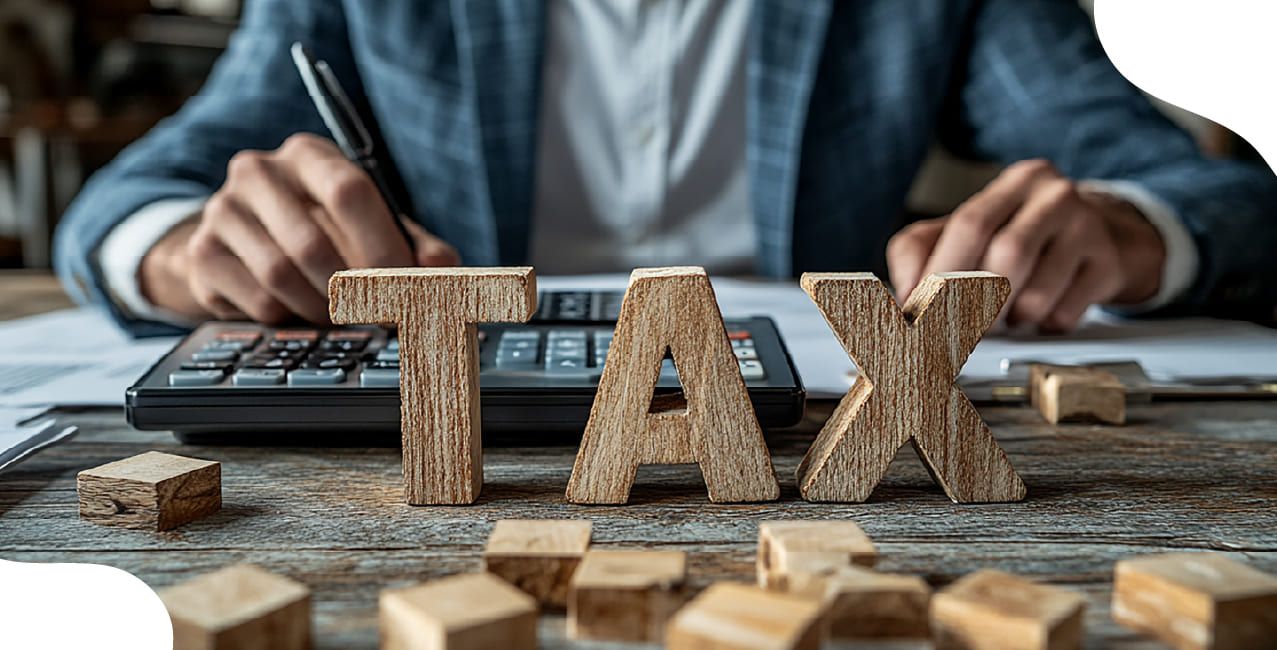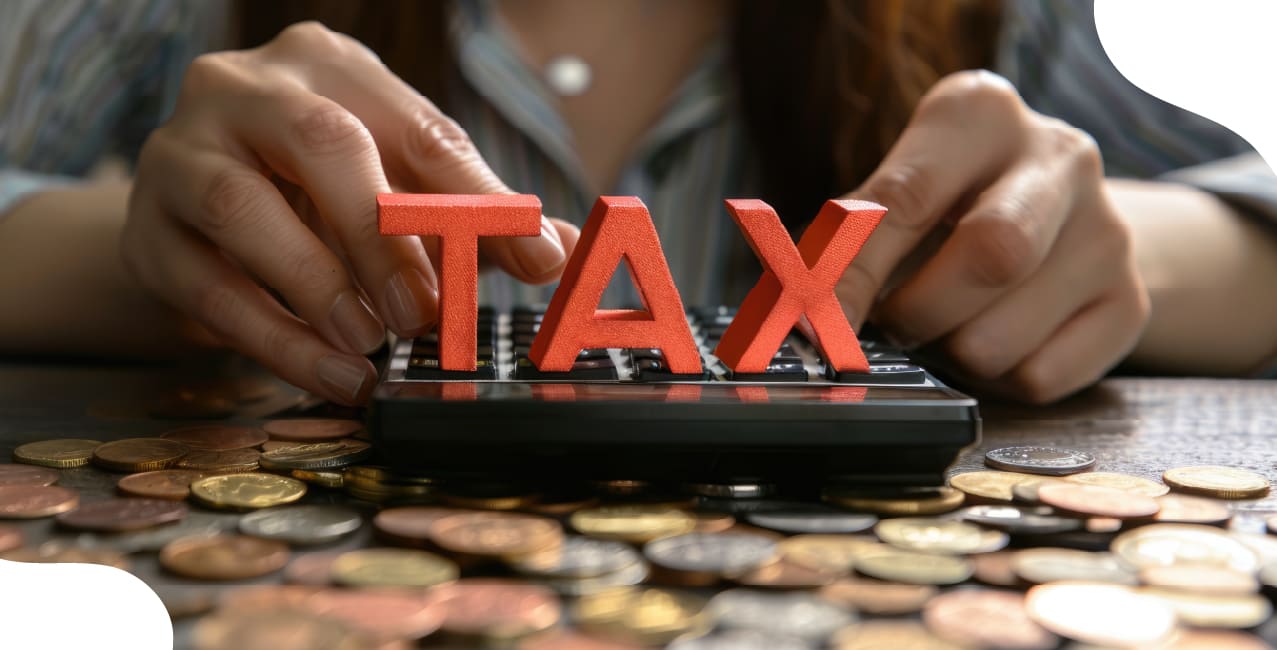
Author
LoansJagat Team
Read Time
6 Min
22 Sep 2025
Section 147 of the Income Tax Act – Income Escaping Assessment Explained
To ensure that everyone pays their fair share, Section 147 is an essential tool that enables officials to reopen previously filed tax returns if they subsequently discover substantial evidence of unreported income.
On a whim or suspicion, they cannot simply reopen your case. They require fresh, credible evidence that you concealed income that wasn't taken into account the first time, such as a sizable bank deposit or a real estate purchase.
Never disregard a notice if you receive one. You have a limited amount of time to respond, provide an explanation, and settle your debt. The best course of action to resolve the matter and avoid serious trouble is to act promptly and truthfully.
If the Assessing Officer suspects that taxable income was not assessed, they have the authority to reopen a completed assessment under Section 147 of the Income Tax Act, 1961.
Example:
Dev, a businessman, filed his income tax return for the financial year 2020-21. While investigating a property dealer, the tax officer discovered that Dev had bought a commercial property for ₹50,00,000, but he had failed to disclose it in his income statements.
Key outcomes when authorities identify hidden income.
- Hidden investment indicates reported income for tax purposes.
- The tax officer has the authority to reopen Dev's case.
Reopening case involves:
- Calculating taxes owed on unreported income.
- Assessing any applicable interest.
- Considering possible penalties for non-reporting
The process provides full tax recovery but also adds financial burdens.
Read More - Section 206AB of the Income Tax Act: Complete Guide & TDS Rules
Table:
This table shows you tools for reopening assessments.
This table highlights the key parts of the action under Section 147.
This blog has helped you get the essential rules of Section 147 of the Income Tax Act. Next up, we'll dive into the different Types of Assessment.
(Bonus Tip: This guarantees that unassessed income can be assessed by the guidelines and deadlines outlined in sections 148 to 153.)
Importance of Section 147 of the Income Tax Act
To maintain equity among taxpayers and safeguard public funds, Section 147 of the Income Tax Act permits the Assessing Officer to reopen completed assessments if it is believed that income has evaded taxation.
Example:
Sonu, who did not fully disclose his income in a particular financial year. The department, upon discovering new information, can use Section 147 in the following way:
- Discovery: The department finds evidence that Sonu earned rental income of ₹5,00,000 that was not declared in his original ITR for the Assessment Year 2022-23.
- Reopening Case: A notice is issued to Sonu under Section 148, informing him that his assessment for that year is being reopened.
- Re-assessment: Sonu is allowed to explain the undisclosed income. After hearing him, the officer can reassess his total income, adding the escaped ₹5,00,000.
- Consequence: Sonu becomes liable to pay the due tax along with applicable interest and potential penalties on the escaped income.
This process helps ensure that Sonu receives fair treatment like all compliant taxpayers, promoting fairness and avoiding revenue loss from undisclosed information.
Section 147 plays a vital role in preventing tax evasion. It's essential to explore its main objective to understand its purpose fully.
Objectives of Section 147 of the Income Tax Act
Section 147 has important aims to preserve the fairness of a tax. It ensures that taxpayers cannot conceal or forget to declare income and avoid paying taxes.
Main Objectives:
These pointers show you the main objective.
- Detect Undisclosed Income: Find income that was not reported on tax returns.
- Prevent Tax Evasion: Stop individuals from evading taxes by concealing their earnings.
- Ensure Fairness: Make sure honest taxpayers are not at a disadvantage.
- Allow Reassessment: Grant tax authorities the authority to reopen cases if new income is discovered.
These primary objectives are helpful for you.
Karan’s Example:
In 2021-22, Karan collected rent of ₹3,00,000, which was undeclared in his tax return. The tax department discovered these bank records, and he was again reopened under Section 147.
Example Table:
Karan's case details for reassessment under Section 147.
Compliance ensures tax equity and revenue protection.
Preventing anyone from taking liberties and paying less than we should is what Section 147 protects the system of taxation against. Now, talk about the TDS Rate of Section 147.
Also Read - Section 115JD of the Income Tax Act: Complete Guide & MAT Rules
TDS Rules Under Section 147
Section 147 enables the tax department to verify earlier instances where TDS (Tax Deducted at Source) was not correctly applied or reported. This guarantees the right collection of tax.
Key Points About TDS Under Section 147:
Consequences of non-compliance with TDS provisions.
- This applies when TDS was not deducted or deposited for any payment.
- Taxpayers may need to pay the missing TDS amount + interest.
- The deductor (who pays you) can also be penalised for not deducting TDS.
Ensures tax collection at source and compliance.
Karan's Example:
In 2022-23, Karan earned ₹5,00,000 as freelance fees. The company towards whom he made the payment has not paid 10% TDS (₹50,000). This was discovered by the tax department, which reopened his case.
Example Table:
Scenario detailing TDS non-deduction consequences for Karan.
Highlights dual liability and enforcement mechanisms.
This is a specific provision that ensures tax is collected even when TDS is not deducted. The next topic is the exemption of section 147.
Exemptions Under Section 147
Section 147 enables the tax officers to reopen old tax cases; however, there is an exception where tax officers are not permitted to do so:
Karan's Example:
He had filled in his 2020-21 return to indicate a salary + ₹40000 interest income. The tax department cannot reopen his case later because they suspect that he may also have some additional income, but they must do so with evidence.
Table:
Scenarios determining valid reassessment under Section 147.
Legal reopening requires concrete evidence of escaped income.
Section 147 does not apply when Karan is honest in his return. Cases must be reopened by the department with objective evidence of concealed income. The next topic is the Due Date of Section 147.
Due Date and Compliance Under Section 147
A Section 148 notice, which can be extended to ten years for significant income evasion, must be sent out within three years of the assessment year. To determine their ultimate tax liability, taxpayers must respond, submit their return, and participate in the reassessment process.
This outlines the procedural timeline, taxpayer obligations, and consequences for non-compliance with a reassessment notice.
- Notice Timing: The tax department can send a notice within 6 years (or 10 years if the income hidden exceeds ₹5,00,000).
- Example: Karan forgot ₹6,00,000 income in 2018-19. In 2024, the department can reopen its case (within 6 years).
- Response Time: Karan gets 30 days to reply to the notice.
- Required Action:
- Submit documents proving that the income was reported.
- Or file a revised return with the correct details.
- Pay the unpaid tax and interest, if applicable.
- Late Response: A Penalty may apply if Karan ignores the notice.
A timely and accurate response is crucial to avoid penalties and resolve reassessment proceedings efficiently. The next topic is a practical example of section 147.
Bonus Tip: When Karan receives notice, he must review the old records.
Practical Examples of Section 147
These cases illustrate common scenarios triggering income tax reassessment due to undisclosed income or procedural errors.
- Case 1: Karan sold the property in 2020 but didn't show the profit. In 2023, the tax department noticed his bank deposit matched the sale amount and reopened his case. Karan had to pay tax on the profit plus a penalty.
- Case 2: In 2021, Karan worked freelance and earned ₹3,00,000, but didn't file taxes. The department saw payments in his account and sent a notice. Karan filed a revised return and paid the due tax.
- Case 3: Karan's employer forgot to deduct TDS from his bonus. The department requested that Karan pay the tax directly.
Proactive disclosure and compliance prevent penalties and legal complications during departmental scrutiny. The next Topic is types of assessment under section 147.
Bonus Tip: Never miss reporting any income so as not to be in trouble.
Types of Assessment under Section 147 of the Income Tax Act
"Income Escaping Assessment" is covered in Section 147 of the Income Tax Act of 1961. To determine tax liability, the Income Tax Department looks at income. Reassessment occurs when escaped income is discovered by Section 147.
Example:
Mukesh is a consultant who filed his tax return for the year 2023-24. He reported his professional income but forgot to include money he made from selling a property, thinking it wasn't taxable. The tax officer discovered this information from the registrar and believes that Mukesh didn't report all his income.
As a result, the officer initiated a review of Mukesh's taxes. They will send him a notice and review his tax return to verify its accuracy. This review will help figure out the correct amount of tax he owes, including any interest or penalties for not reporting the capital gains.
Overview of Primary Assessment Types
Classifying the different procedures for determining tax liability.
This table outlines the main assessment pathways under the IT Act.
The central part of section 147 is assessment, as explained in this blog. Now, let's wrap up with the conclusion of this blog.
Conclusion
Section 147 acts as a safety net for the tax authorities. It enables them to review your tax case if they discover unreported or initially untaxed income.
This helps ensure everyone pays their dues, supporting a fair system. Therefore, while it’s important to file your taxes accurately, understanding these rules can help you avoid surprises such as notices, interest, or penalties. When dealing with taxes, always be honest and careful!
FAQS
What should I do if I get a notice under Section 148?
Please do not ignore it. You must respond to the notice by filing the income tax return again if asked to. It is highly advisable to consult a Chartered Accountant or tax lawyer immediately.
Can I challenge the reopening of my assessment under section 147?
Yes. If you believe the "reasons to believe" provided by the officer are incorrect, vague, or based on old information, you can challenge the validity of the notice in court.
Does "escaped income" only mean hidden cash under section 147?
No. It includes any income that was not taxed, such as undisclosed investments (e.g., property, shares), unreported capital gains, foreign income, or excessive deductions claimed incorrectly.
Can the department reopen a case based on mere suspicion or a hunch?
No, the reassessment process cannot be initiated on a mere change of opinion or without any tangible evidence or material suggesting that income has escaped assessment.
Other Related Pages | |||
About the Author

LoansJagat Team
‘Simplify Finance for Everyone.’ This is the common goal of our team, as we try to explain any topic with relatable examples. From personal to business finance, managing EMIs to becoming debt-free, we do extensive research on each and every parameter, so you don’t have to. Scroll up and have a look at what 15+ years of experience in the BFSI sector looks like.

Quick Apply Loan
Subscribe Now
Related Blog Post

LoansJagat Team • 22 Sep 2025
_of_Income_Tax_Act.jpg)
LoansJagat Team • 22 Sep 2025

LoansJagat Team • 22 Sep 2025